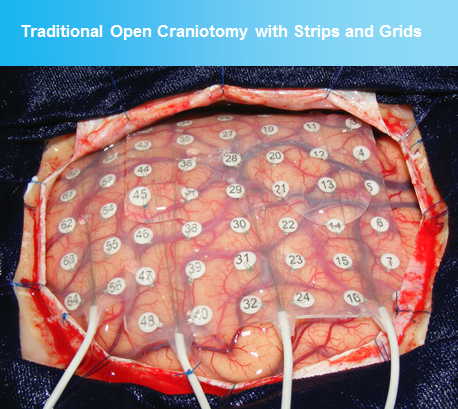Epilepsy Treatment: Strips and Grids
A strips and grids procedure is a diagnostic epilepsy surgery designed to help locate your seizure’s origination.
A strips and grids procedure is a diagnostic epilepsy surgery designed to help locate your seizure’s origination.
If you have epilepsy, at some point, your doctor may recommend a strips and grids procedure. This is typically performed to help your epilepsy care team identify the source of your seizures. The strips and grids procedure is actually the original method of monitoring intracranial electrical signals. It’s also known as subdural grids (SDG).
This method involves laying a strip, or grid, of electrodes directly on the surface of the brain to record brain activity. While these electrodes are in place, the patient stays in a special unit where the electrical recordings can be monitored around the clock. When the patient has a seizure, the recordings help the epilepsy care team determine where the seizure focus is, after which they can plan the appropriate follow-up treatment.
Although this method can provide excellent information to your epilepsy team, a strips and grids approach requires a procedure called a craniotomy, in which a part of the skull is temporarily removed in order to gain access to the brain. While a craniotomy is a common procedure, it can result in headache, fatigue, restrictions on activity, and a period of time spent in the ICU after the procedure. Additional complications of a craniotomy include stroke, swelling of the brain, nerve damage, or loss of mental function.1

Talk to your epilepsy care team about what treatment options are right for you and the associated risks.
Content reviewed for accuracy by Dr. Jiyeoun Yoo, MD, FAES, FACNS